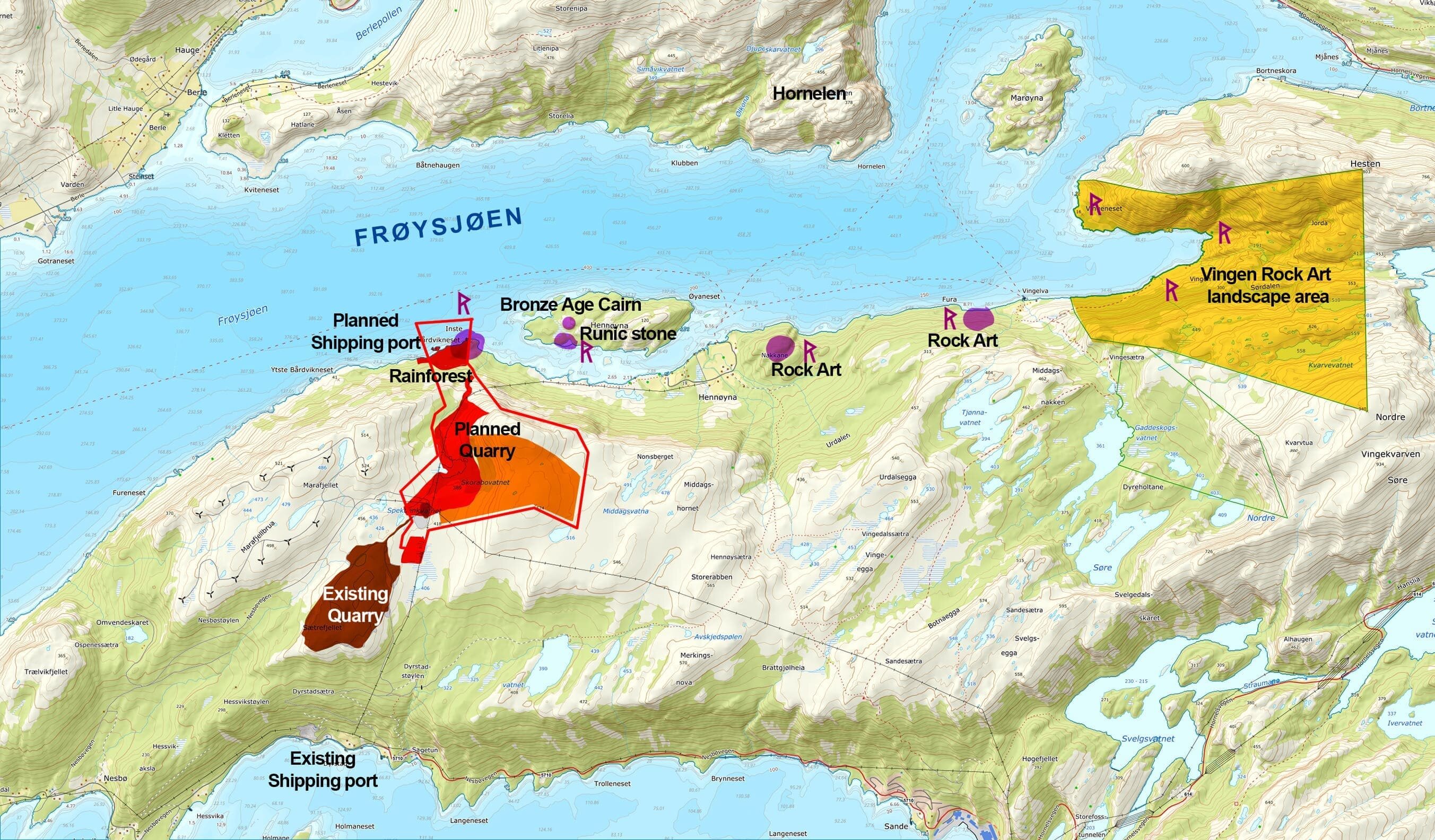Heritage Alert Vingen Rock Art Area
ICOMOS, together with its Norwegian National Committee and the International Scientific Committee on Rock Art (ISC-CAR), is issuing a Heritage Alert, to stop the planned stone quarry on Aksla mountain, close to the Vingen rock art area, that will damage this remarkable site and its pristine surrounding landscape, unchanged for over 6000 years. Thousands of petroglyphs from the Stone Age can be found in the area, providing unique insights into past narratives.
Current threat
The stone quarry, which the Municipal Council of Bremanger and the Norwegian Ministry of Local Government and Regional Development recently approved, is planning on extracting 360 million tons of Devonian sandstone for European export, operating approximately five kilometers westwards from the Vingen landscape protection area. The Dutch company behind the planned stone quarry, Beheersmij Fr. Bontrup BD, is already running another quarry on the adjacent Sætrefjellet mountain, with a shipping port located on the southern side of the Dyrstad peninsula [see figure below].
The Vingen rock art area is one of the largest and best-preserved rock art concentrations in Northern Europe. It encompasses approximately 2km², and is situated within a larger landscape protection area totalling 5km². The new development will significantly alter the Vingen area and visually scar the surrounding landscape, with dust and noise pollution additionallly affecting the site.
The focus of the Heritage Alert is on the Vingen Rock Art landscape area [yellow caption]. Rock art has been found in other places west of the area [purple captions]. It is likely that Stone Age activity extended all the way to the planned shipping port [red captions]. Several runic stones and a large Bronze Age cairn are located at the Hennøya island, close to the planned shipping port.
Value and History
The Vingen area can only reached by boat, and the surrounding area remains one of the largest on the outer coast of Western Norway still maintaining a road-free gradient from fjord to mountains.
A protected landscape area surrounding the rock art was established in 1980 through the Nature Diversity act, and the Cultural Heritage Act automatically protects the area, archaeological sites included.
The rock art was produced at the end of the Late Mesolithic period, a subclassification of the Stone Age. Archaeological excavations in the vicinity of rock art panels and independent scientific investigations have dated the rock art production to between 6900-9200 Cal BP. The rock art, dwelling depressions, production tools for making rock art and archeaological sites with remains from numerous other tasks and activity - are all set in a landscape that has remained unchanged since the rock art was produced, thus beyond estimation in terms of value.
Immediate action is necessary in order to stop the threat of damage to the area and its surrounding landscape.![]() Read the press release
Read the press release
![]() Read the letter sent to Norwegian government officials
Read the letter sent to Norwegian government officials
Photo Credits: Trond Lødøen
See also


